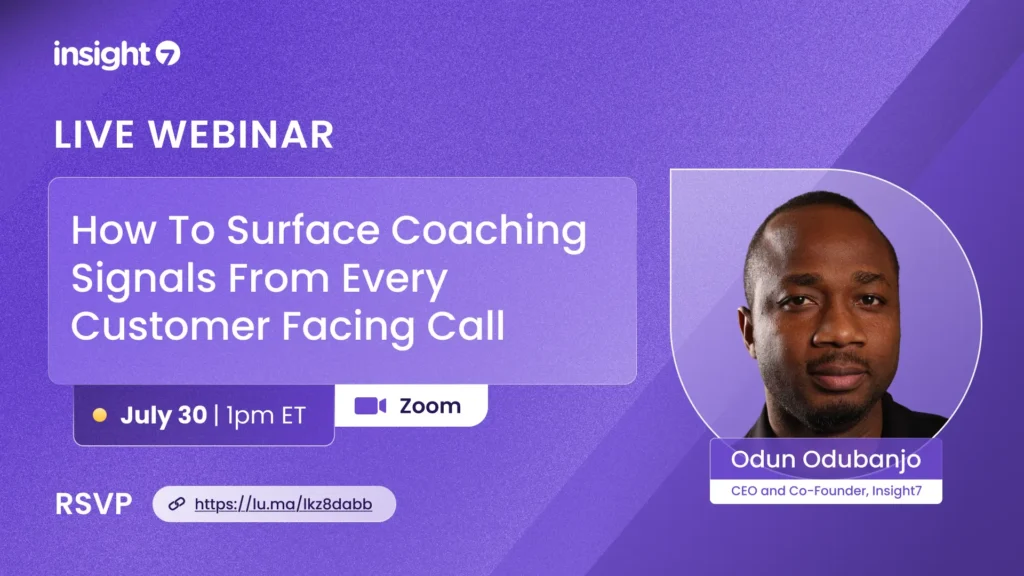Sentiment Analytics Surveys: Proven Tips
-
Hello Insight
- 10 min read
Emotion Insight Optimization is a game-changer in the realm of sentiment analytics surveys. As businesses strive to understand their customers' emotions more profoundly, the ability to identify and analyze these feelings becomes essential. When surveys capture emotional nuances, they can reveal deeper insights beyond surface-level feedback, enabling organizations to align their strategies with actual customer sentiments and preferences.
Effective Emotion Insight Optimization fosters a more nuanced approach to data interpretation. By examining emotional cues embedded in survey responses, businesses can better understand their customers’ experiences, preferences, and pain points. This process not only enhances the accuracy of data-driven decisions but also enriches customer engagement, ultimately leading to improved satisfaction and loyalty. Understanding how to optimize emotional insights can significantly elevate any sentiment analytics initiative.
Generate visualizations from your qualitative data. At Scale.

Understanding Sentiment Analytics
Sentiment analytics is the practice of interpreting and analyzing emotions expressed in customer feedback. It acts as a powerful tool for businesses to gauge how their products and services resonate with customers. Understanding sentiment analytics means diving deep into customer sentiments that reflect their experiences and opinions.
Engaging with this data provides a clearer picture of customer emotions and preferences, which is essential for strategic planning. Emotion Insight Optimization plays a vital role here, enhancing the analytical accuracy of sentiment analytics. By focusing on the emotional aspects of customer feedback, businesses can extract valuable insights. These insights lead not only to improved decision-making but also to a more profound understanding of customer experiences. Therefore, understanding sentiment analytics is fundamental in fostering stronger relationships with customers and driving brand loyalty.
Emotion Insight Optimization: A Deeper Dive
Emotion Insight Optimization is pivotal in refining the analytical capabilities of sentiment analytics. By focusing on the nuances of emotional responses, businesses can gather richer data that leads to more informed decision-making. Understanding customer sentiment not only uncovers immediate concerns but also reveals deeper insights about preferences and expectations. This holistic view enables organizations to paint a comprehensive picture of customer experiences.
When executed effectively, Emotion Insight Optimization streamlines the process of translating sentiment data into actionable strategies. It aligns customer feedback with business objectives, ensuring that organizations remain responsive to evolving needs. By prioritizing emotional insights, companies can enhance their customer engagement strategies and refine product offerings, thereby fostering a more loyal customer base. In essence, optimizing emotional insights not only enriches data analysis but also cultivates a proactive approach to customer satisfaction and business agility.
- Explain the concept of sentiment analytics.
Sentiment analytics is the process of analyzing text data to gauge public emotion, opinion, or sentiment toward a subject. This methodology is essential for businesses, as it enables them to understand customer feelings and preferences accurately. By using various tools and algorithms, analysts can sift through comments, reviews, and social media interactions, drawing valuable insights about customer satisfaction or dissatisfaction.
Emotion Insight Optimization plays a crucial role in enhancing sentiment analytics. It focuses on unearthing deeper emotional insights from the data, thereby promoting better strategic decisions. This optimization involves analyzing emotional tones, context, and intensity within customer feedback, ultimately leading to a more nuanced understanding of consumer sentiments. An effective analysis can reveal patterns and trends, guiding businesses to tailor their products and services to meet customer needs more effectively.
- Explore how Emotion Insight Optimization enhances analytical accuracy.
Emotion Insight Optimization plays a critical role in enhancing analytical accuracy in sentiment analytics surveys. By focusing on emotional data, this approach allows analysts to capture subtleties often overlooked in traditional data analysis. For instance, positive and negative sentiment can be assessed not just by text but also through tone, context, and engagement levels, leading to a more nuanced understanding of customer feedback.
When analytical processes incorporate Emotion Insight Optimization, several advantages arise. First, the identification of emotional cues helps in categorizing responses accurately, reducing misunderstanding and misinterpretation. Second, by analyzing sentiment from various perspectives—such as cultural or demographic factors—organizations can gain comprehensive insights. This multi-faceted approach improves overall decision-making accuracy and allows businesses to tailor their strategies in response to expressed emotions. Emphasizing emotional elements ultimately leads to richer insights and more effective customer engagement strategies.
Benefits of Emotion Insight Optimization in Surveys
One of the key benefits of Emotion Insight Optimization in surveys is its ability to improve data-driven decision-making. By harnessing emotional insights, organizations can interpret customer feedback beyond basic sentiment scores. This deeper understanding allows businesses to tailor their strategies based on genuine emotional responses, enhancing overall engagement. When companies accurately capture emotional nuances, they can effectively identify areas that require improvement, leading to more informed and strategic decisions.
Additionally, effective Emotion Insight Optimization fosters a superior understanding of customer experience. By analyzing emotional reactions, organizations can pinpoint what resonates with their audience and what does not. This ability to empathize with customers creates opportunities for personalization and enhances loyalty. Through targeted adjustments driven by emotional data, businesses can refine their offerings and optimize customer interactions, ultimately driving growth and satisfaction.
- Discuss improved data-driven decision-making.
Emotion Insight Optimization plays a pivotal role in enhancing data-driven decision-making. By systematically analyzing sentiments through surveys, organizations can derive meaningful insights that inform their strategies. This process allows companies to transition from intuition-based decisions to ones grounded in actual customer emotions and feedback. Understanding sentiment analytics helps identify trends and shifts in consumer behavior, reducing the risk associated with product launches and marketing campaigns.
To ensure effective data-driven decision-making, consider these essential strategies:
Set Clear Goals: Define what you want to achieve with your sentiment surveys. Specific goals guide the data collection process and ensure focused analysis.
Utilize Comprehensive Tools: Invest in platforms that facilitate Emotion Insight Optimization. Advanced analytics tools enhance the depth of insights you gather.
Monitor Trends Over Time: Regularly assess changes in sentiment to adapt strategies promptly. This ongoing analysis helps maintain alignment with customer expectations.
By integrating these strategies, organizations can significantly improve their decision-making processes, ultimately fostering a more customer-centric approach.
- Illustrate enhanced customer experience understanding.
Understanding the nuances of customer emotions is vital for building a positive customer experience. This process begins with analyzing sentiment analytics effectively. By focusing on Emotion Insight Optimization, businesses can uncover deeper insights from customer feedback that may initially appear superficial. Listening attentively to emotions allows teams to identify trends, patterns, and pain points, providing a comprehensive understanding of the customer journey.
To illustrate enhanced customer experience understanding, consider three crucial aspects. First, fostering emotional connections can lead to increased customer loyalty. Second, effectively identifying customer pain points allows for targeted solutions, enhancing satisfaction. Lastly, actively using insights to inform decision-making and strategy can create a more responsive business environment. By focusing on these areas, organizations can transform raw data into meaningful actions that resonate with customers, ultimately improving their overall experience.
Evaluate Performance on Customer Calls for Quality Assurance.
Implementing Proven Tips for Emotion Insight Optimization
To achieve effective Emotion Insight Optimization, start by defining the clear objectives of your sentiment survey. This clarity guides the survey design, ensuring it captures the emotions you're interested in measuring. Next, choose suitable channels for collecting feedback, whether through online surveys, interviews, or focus groups. Each channel will cater to different target audiences, and selecting the right one enhances the quality of responses.
Once your survey is designed, utilize technology to analyze the collected data efficiently. Advanced tools and platforms can reveal hidden patterns in customer sentiments, enabling deeper emotional insights. Consider integrating machine learning algorithms, which can help identify trends and sentiments at a granular level. Using these proven tips, you will not only enhance your understanding of customer emotions but also position your organization to make informed, data-driven decisions that improve overall customer experience.
Step-by-Step Guide to Survey Design for Effective Analysis
Creating effective surveys for sentiment analysis requires a structured approach. First, it’s crucial to define clear objectives for your sentiment survey, ensuring you know exactly what insights you want to gain. Knowing your goals will help craft questions that are targeted and relevant, leading to more precise data collection. Next, select the appropriate channels for gathering feedback. Whether it’s through emails, social media, or direct surveys, the right platform can significantly impact response rates and the quality of the data gathered.
Once the survey is launched, continually monitor and refine the questions based on initial responses. This step not only optimizes the emotional insight you derive but also enhances the overall quality of the survey. By following these steps diligently, you’ll set a foundation for Emotion Insight Optimization that leads to actionable outcomes and informed business decisions. Embracing this methodical approach ensures that your efforts in sentiment analytics are both effective and insightful.
- Step 1: Define clear objectives for your sentiment survey.
To ensure your sentiment survey is effective, begin by defining clear objectives. These objectives should reflect what you hope to learn from your survey. Are you seeking to understand customer satisfaction, identify areas for improvement, or gauge emotional responses to a product or service? By clarifying your goals, you'll create a focused survey that yields actionable insights.
Next, consider how these objectives align with broader strategic initiatives. For instance, if your aim is to enhance customer experience, your questions should delve into emotions connected to user interactions. This alignment not only streamlines the survey process but also prioritizes data that contributes to Emotion Insight Optimization. Ultimately, well-defined objectives will guide your survey design and help you uncover valuable emotional insights from your audience, which can influence decision-making and strategy.
- Step 2: Choose the right channels for gathering feedback.
Choosing the right channels for gathering feedback is key to the success of Emotion Insight Optimization. Each channel offers distinct advantages that can cater to different demographics and preferences. For instance, online surveys provide convenience and reach a diverse audience, while in-person interviews can yield deeper insights through nuanced conversations. Understanding the target audience and what resonates with them will guide this choice.
Additionally, consider using social media platforms to tap into real-time sentiments and engage with consumers where they already interact. Mobile apps can also offer timely feedback opportunities during customer interactions. Balancing these channels ensures you collect comprehensive feedback, allowing for a richer analysis. Ultimately, selecting the right channels not only improves response rates but also enhances the quality of insights gleaned from your sentiment analytics surveys.
Emotion Insight Optimization: A Deeper Dive
Understanding sentiment analytics is crucial for organizations aiming to improve their customer interactions. This method involves analyzing customer feedback to understand emotions behind their responses, enhancing overall service quality. With Emotion Insight Optimization, organizations can delve deeper into emotional sentiment, leading to more accurate interpretations of customer feelings. This analysis provides actionable insights that directly impact decision-making.
When Emotion Insight Optimization is effectively employed, the results are transformative. It allows businesses to not only comprehend the customer experience better but also identify specific areas for improvement. By grasping the emotional responses of their audience, organizations can tailor their strategies, leading to better customer satisfaction and loyalty. Therefore, harnessing these insights offers a pathway for continuous growth and adaptation in an ever-evolving marketplace.
Leveraging Technology for Advanced Insights
Technology plays a crucial role in obtaining advanced insights when analyzing sentiment data. By utilizing various digital tools and platforms, businesses can streamline their processes and gain a better understanding of customer emotions. These technologies enable users to effortlessly organize and analyze large datasets, revealing valuable insights that inform strategic decisions.
Integrating machine learning further enhances this capability, automating the analysis of sentiments and emotional cues. One powerful approach is Emotion Insight Optimization, which focuses on improving the accuracy of interpretation. This leads to more reliable results, allowing businesses to connect deeply with customer experiences and preferences. In a world inundated with information, these technological advancements empower organizations to focus on what truly matters—understanding their audience and refining their products and services accordingly.
- Discuss tools and platforms that facilitate Emotion Insight Optimization.
Many tools and platforms are designed to facilitate Emotion Insight Optimization, simplifying the analysis of customer sentiment. These intuitive systems allow businesses to collect and interpret feedback effectively. For instance, various platforms offer features that automate transcription and analysis, highlighting key insights such as pain points and customer desires. By leveraging these capabilities, organizations can create more targeted solutions and improve overall customer experiences.
Furthermore, integrating advanced technology like machine learning enhances Emotion Insight Optimization by identifying patterns within vast data sets. This technology helps in classifying sentiments accurately, ensuring that businesses can respond to customer feedback promptly. Additionally, collaborative functionalities allow teams to work together on shared projects, fostering a comprehensive understanding of customer insights. Ultimately, utilizing the right tools not only streamlines sentiment analysis but also paves the way for data-driven strategies that resonate effectively with target audiences.
- Explore machine learning integration in sentiment analysis.
Machine learning integration in sentiment analysis represents a transformative approach to gathering and interpreting emotional insights from customer data. By employing algorithms that learn from vast amounts of textual or spoken feedback, organizations can unearth nuanced sentiments that traditional methods might overlook. With advancements in natural language processing, machine learning models can effectively categorize feedback into positive, negative, and neutral sentiments, thereby enhancing Emotion Insight Optimization.
The integration of machine learning helps not only in analyzing customer feelings but also in predicting future trends. For example, sentiment analysis can identify recurring themes or words in customer communications, which may indicate emerging issues or newfound preferences. Through these insights, businesses can adapt strategies to better align with customer expectations and improve overall satisfaction. This proactive approach enables organizations to stay ahead in a competitive landscape, demonstrating the real power of Emotion Insight Optimization in sentiment analysis.
Conclusion: Maximizing Emotion Insight Optimization in Your Surveys
To maximize Emotion Insight Optimization in your surveys, it’s essential to embrace effective strategies. Begin by ensuring that your survey questions are designed to elicit genuine emotional responses from participants. This can be accomplished by focusing on open-ended questions that encourage detailed feedback rather than simple yes or no answers. The richness of these responses will provide deeper insights into customer sentiments.
Additionally, analyzing the collected data critically can uncover underlying emotional trends. Utilizing advanced analytics tools enhances your ability to interpret sentiments accurately. By aligning your survey design and analysis with Emotion Insight Optimization, you create a more impactful understanding of customer experiences, ultimately leading to better decision-making and improved customer satisfaction.






